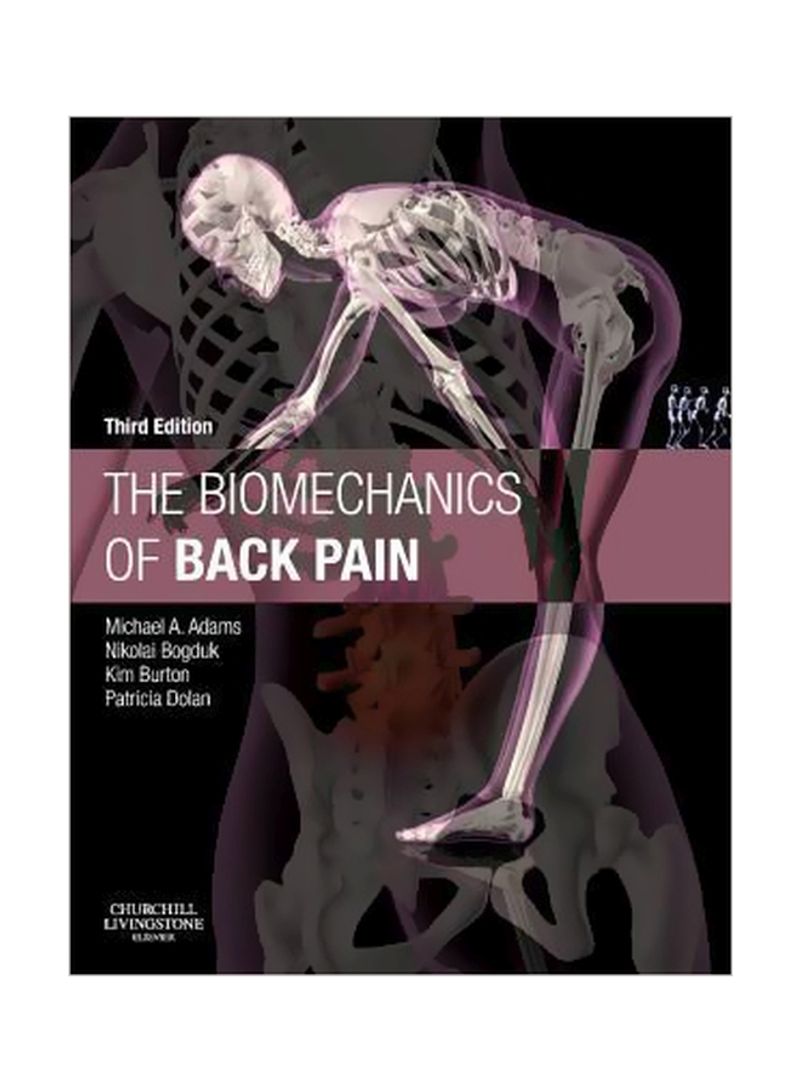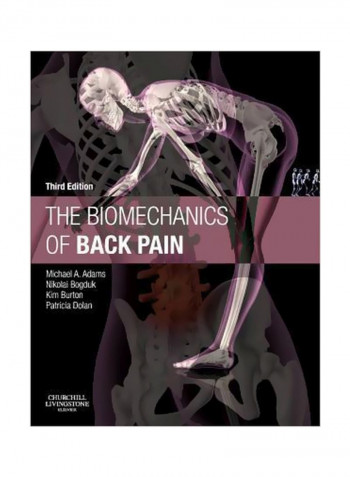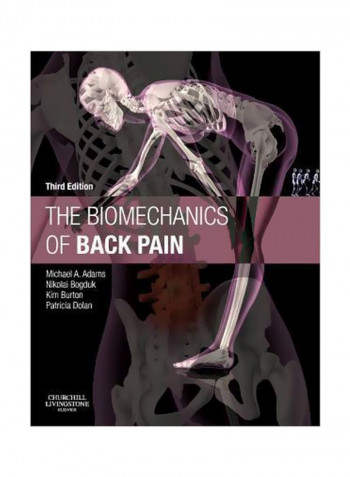The Biomechanics Of Back Pain Hardcover English by Michael A. Adams - 1-Oct-12
Recommend
Sort by
Rating
Date
Specifications
Author 1
Michael A. Adams
Book Description
Authored by experts of international renown, the new edition of The Biomechanics of Back Pain forms a bridge between the latest research and the effective clinical management of patients with back problems. Now published for the first time in full colour, the volume presents a unique synthesis of the latest research findings and explains its recent changes in emphasis - from trying to understand and reverse age-related spinal degeneration to addressing the soft tissue causes of pain. New chapters are devoted to Sensorimotor Control, and Cervical Spine Anatomy and Biomechanics, while a bonus website contains useful PowerPoint presentations, which include seminars entitled Back Pain and Forces on the Spine as well as an overview of the Psychosocial Flags Framework. Clinically orientated and highly practical throughout, The Biomechanics of Back Pain has become the standard platform by which readers keep abreast of research and developments in the field and is essential for all clinicians involved in the care and treatment of patients with back pain, as well as for those studying its causes and methods of prevention. "The final remarks of the authors include-'There is good evidence that the psychosocial characteristics of many patients with chronic back pain are not the underlying cause of the problem; rather they are a response to vague diagnosis,ineffective treatment and a "compensation culture .' As more than half the content of this book is of direct relevance to OH professionals, I have no hesitation in recommending that it has a place on our bookshelves." Reviewed by: John Challenor, Oxford Journals Clippings, Occupational Medicine, vol 64, no 7, Date: Oct 2014
Language
English
Publisher
Elsevier Health Sciences
Publication Date
1-Oct-12
Number of Pages
336
About the Author
I commenced research into spinal pain, in 1972, when essentially nothing was known about the problem. There being no established groups or departments working on this problem, I forged my own career, using borrowed resources. I commenced in a Department of Anatomy, where I pursued the innervation of the vertebral column as a fundamental element in understanding the sources and mechanisms of spinal pain. Professor Jim Lance fostered this interest, and accommodated my PhD studies. In his department I continued my anatomy studies but was able also to commence clinical applications. I developed and tested new diagnostic and surgical procedures for back pain and for neck pain. While in Professor Lance's Department, I participated in laboratory studies of the mechanisms of migraine. At the University of Queensland I continued to develop and apply the diagnostic and surgical techniques that I started at the University of NSW, serving as an honorary medical officer at the Pain Clinic of Princess Alexandra Hospital. Meanwhile I supervised science and medicine postgraduate students who undertook basic science studies into the biomechanics of the back and neck. At the University of Newcastle, I had established a reputation sufficient to attract a grant from the Motor Accidents Authority of NSW to investigate the cause and treatment of neck pain after whiplash. The grant supported three PhD students over a six year period. They performed studies that validated the diagnostic procedures and which tested the surgical procedures in a placebo-controlled double-blind randomized trial. Having established an international standing in the development and testing of treatments for spinal pain, I participated in the design and analysis of controlled trials conducted elsewhere in Australia and in the USA. These tested the efficacy of: lumbar radiofrequency neurotomy for back pain, intradiscal electrothermal anuloplasty for back pain, prolotherapy for back pain, exercises for neck pain. Between 1997 and 2002 I conducted the National Musculoskeletal Medicine Initiative which developed and tested evidence-based practice guidelines for the management of back pain, neck pain, shoulder pain, knee pain, and pain in the foot, wrist, and elbow. My work has been awarded the Volvo Award for Back Pain Research, the Research Prize of the Cervical Spine Research Society, the Award for Outstanding Research of the North American Spine Society, and three times the Research Prize of the Spine Society of Australia. My students have been awarded research prizes by the International Association for the Study of Pain, the Australian Rheumatology Association, and the Australian New Zealand College of Anaesthetists. I have never had a funded department to which to attract investigators and academics. I have relied on scholarships for students, and the goodwill of private practitioners who wished to contribute to clinical research. Of late, I have been supervising Neurosurgery residents undertaking studies of the outcomes of treatment for Radicular pain and back pain.
Edition Number
3
Editorial Review
This book is an excellent addition to the literature on back pain. Biomechanics is fundamental to understanding the physical basis of back pain, but many biomechanical textbooks are very technical and difficult for the non-specialist. What is new and different about this book is that it presents complex ideas very simply and clearly, and applies them to the clinical situation. This volume is to be highly recommended to all doctors and therapists who deal with patients with back pain. Professor Gordon Waddell DSc, MD, FRCS Orthopaedic Surgeon, Glasgow. This excellent book presents in one location a synthesis of much of the recent literature on the mechanical factors contributing to low back pain. The logic of the text is easy to follow and each chapter builds upon concepts and ideas presented in earlier chapters. I can think of few books to compare to it and I recommend it highly. Dana J Lawrence, DC, MMedEd, MA(Palmer College of Chiropractic) It is refreshing to see a book that interprets and integrates the literature instead of simply repeating studies. W.S. Marras, Biodynamics Laboratory, Ohio State University The book is one of the most evidence-based books on the market. The authors are research active and always updating their knowledge. Principal Lecturer in Physiotherapy, University of Cumbria



